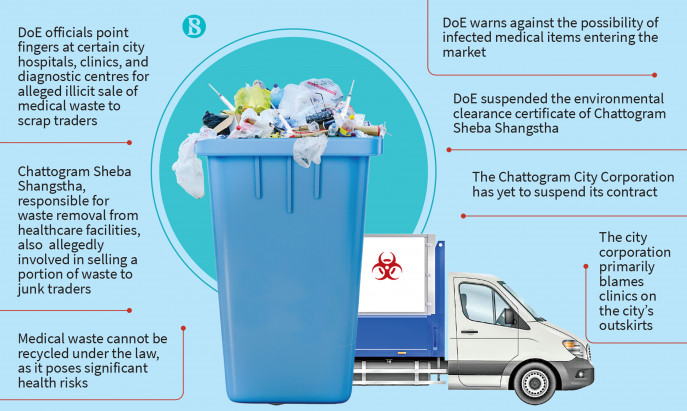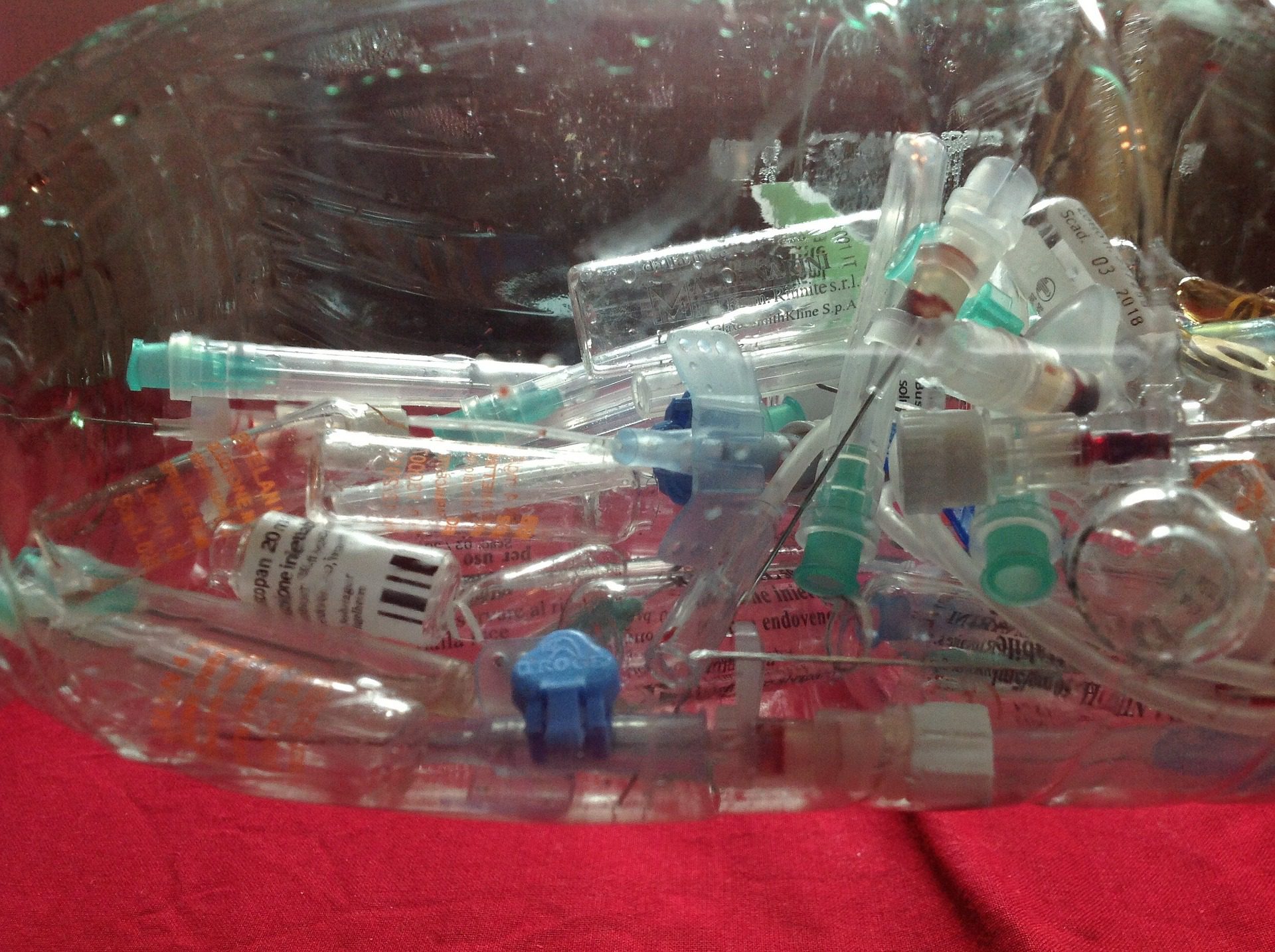Your Trusted Companion: Medical Waste Removal Services Tailored to Your Needs
Your Trusted Companion: Medical Waste Removal Services Tailored to Your Needs
Blog Article
Keep Ahead of Rules: Expert Advice on Medical Waste Disposal
In a world where the medical care industry is frequently developing, it is vital for clinical centers to remain in advance of regulations when it comes to the proper disposal of clinical waste. From recognizing the different groups of medical waste to carrying out the ideal collection and partition approaches, this conversation will provide workable suggestions and valuable understandings to aid centers remain ahead of laws in the ever-changing landscape of medical waste disposal.
Comprehending Clinical Waste Categories
Recognizing medical waste groups is vital for appropriate disposal and management in medical care facilities. Clinical waste describes any waste produced by medical care activities that might pose a risk to public wellness or the setting. It is vital to categorize medical waste precisely to guarantee its safe handling, transportation, disposal, and treatment.
There are a number of classifications of medical waste that healthcare facilities require to be acquainted with. One of the most usual categories include transmittable waste, pathological waste, sharps waste, pharmaceutical waste, and chemical waste. Each classification has details guidelines and regulations for its appropriate management and disposal.
Pathological waste refers to human cells, organs, or body parts that need special handling and disposal. Pharmaceutical waste makes up expired, unused, or infected medications that need cautious handling and disposal.
Staying Up-To-Date With Regulatory Adjustments
Remaining present with regulatory changes is important for health care facilities to ensure conformity and proper management of clinical garbage disposal. medical waste removal services. With policies continuously advancing, it is crucial for health care facilities to remain updated to avoid penalties, penalties, and prospective harm to the setting and public health and wellness
To remain in advance of governing changes, medical care facilities must develop a system for tracking and tracking updates. This can be done by registering for governing newsletters, participating in seminars and workshops, and proactively joining market associations. Furthermore, centers ought to mark a personnel or team accountable for remaining informed and sharing details to appropriate stakeholders.
Regular interaction with governing companies is additionally vital. Healthcare centers ought to develop connections with neighborhood, state, and federal agencies to ensure they know any type of changes in guidelines that might impact their waste administration techniques. This can be done through normal meetings, involvement in public remark periods, and proactive involvement with regulatory agencies.
Furthermore, health care centers must consider partnering with waste administration companies that focus on clinical waste disposal (medical waste disposal services with WasteX). These firms are frequently skilled in the current laws and can offer assistance and assistance to guarantee conformity
Carrying Out Correct Collection and Segregation Methods
To properly manage clinical waste disposal, medical care centers must establish correct collection and partition approaches based on governing guidelines. Executing these approaches makes sure the risk-free handling and disposal of potentially hazardous materials, protects the setting, and decreases the risk of infections and injuries to healthcare employees and the basic public.
Appropriate collection and segregation approaches entail making use of assigned containers and labeling systems. Healthcare centers should provide plainly classified containers for different types of clinical waste, such as sharps, transmittable waste, pharmaceutical waste, and non-hazardous waste. These containers should be color-coded and plainly significant to avoid confusion and advertise simple recognition.
In addition, health care centers need to train their staff on the correct procedures for gathering and setting apart clinical waste. This consists of informing them on the different types of waste, the suitable containers to use, and the importance of adhering to laws and standards. Routine training sessions and correspondence course ought to be performed to make sure that personnel remain current on best methods.
Additionally, healthcare facilities need to establish a system for normal collection and disposal of medical waste. This might involve partnering with qualified waste management original site firms that specialize in clinical garbage disposal. These business will certainly guarantee that the accumulated waste is transported and thrown away in compliance with governing requirements.
Selecting the Right Disposal Approaches

Incineration is just one of one of the most reliable and usual methods for throwing away specific kinds of clinical waste, such as pathological waste and sharps. It includes the controlled burning of waste at high temperature levels, lowering it to ash. Nonetheless, incineration can launch hazardous pollutants into the air and add to air pollution.

Other disposal approaches include chemical therapy, microwave treatment, and landfilling. Chemical therapy involves the usage of chemicals to neutralize the waste and decontaminate. Microwave treatment makes use of microwave energy to warmth and disinfect the waste. Landfilling entails hiding the waste in an assigned land fill area (medical waste disposal services with WasteX). Nonetheless, landfilling needs Bonuses to be the last hope due to the possible risk of contamination to dirt and groundwater.
Guaranteeing Compliance Through Documentation and Training
After very carefully taking into consideration the appropriate disposal approaches for clinical waste, medical care centers need to make certain conformity with guidelines and lessen environmental effect by executing efficient documents and training treatments. This step is important in preserving a lasting and risk-free environment for both healthcare employees and the basic public.

Training is similarly essential in ensuring conformity with laws. Healthcare workers that deal with clinical waste should receive suitable training on waste segregation, taking care of, and disposal procedures. This training should cover topics such as the proper use of personal safety devices, recognition of various sorts of waste, and the appropriate disposal approaches for each and every waste group. By providing comprehensive training, healthcare facilities get redirected here can encourage their staff to make informed choices and minimize the risk of improper garbage disposal.
Conclusion
To conclude, remaining in advance of guidelines in medical garbage disposal is critical for medical care facilities. medical waste removal service. Understanding the various classifications of medical waste, staying updated with regulative changes, executing proper collection and partition techniques, selecting the appropriate disposal techniques, and making sure conformity through documents and training are all crucial steps. By following these guidelines, health care organizations can properly handle and dispose of clinical waste in a risk-free and responsible fashion
From comprehending the various classifications of clinical waste to carrying out the right collection and partition methods, this conversation will certainly supply valuable insights and workable suggestions to assist centers stay in advance of regulations in the ever-changing landscape of clinical waste disposal. - medical waste disposal services with WasteX
The most typical classifications consist of transmittable waste, pathological waste, sharps waste, pharmaceutical waste, and chemical waste. Medical care facilities should offer clearly identified containers for different types of medical waste, such as sharps, transmittable waste, pharmaceutical waste, and non-hazardous waste. Healthcare centers should develop a comprehensive system to record and track all aspects of medical waste disposal, consisting of types of waste produced, amounts, and disposal approaches made use of. Medical care employees that deal with clinical waste needs to obtain proper training on waste partition, managing, and disposal procedures.
Report this page